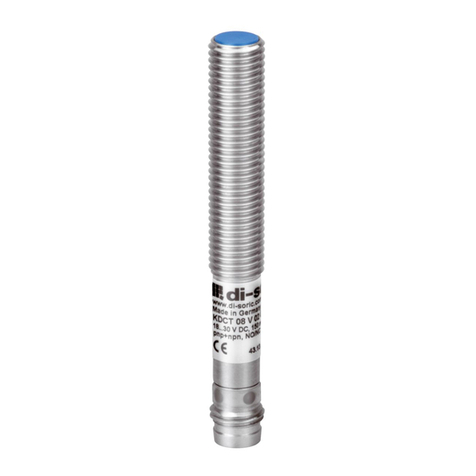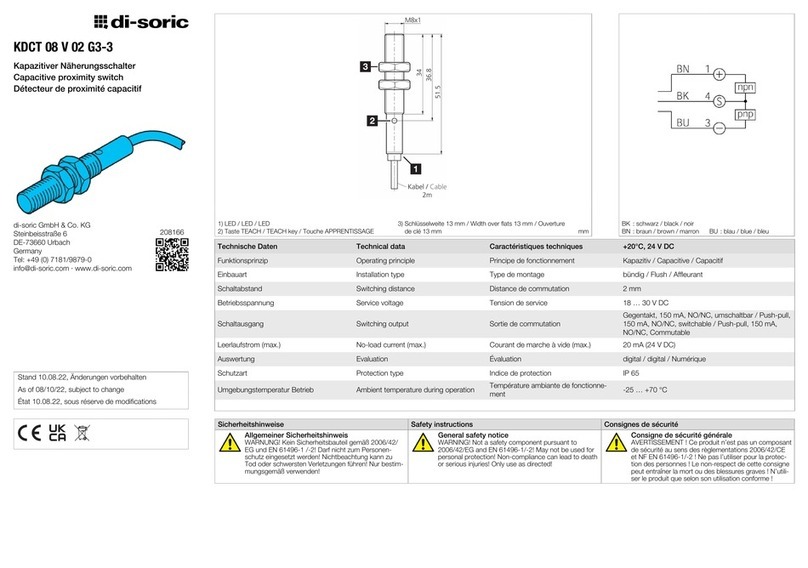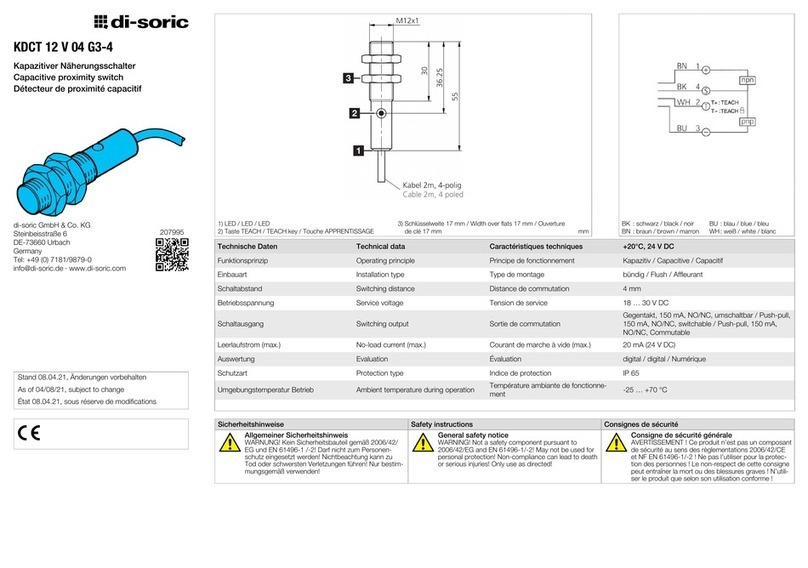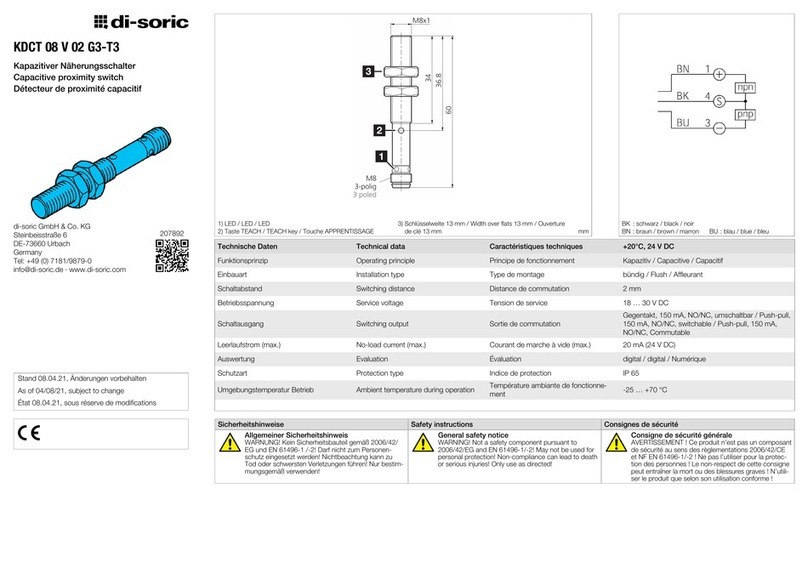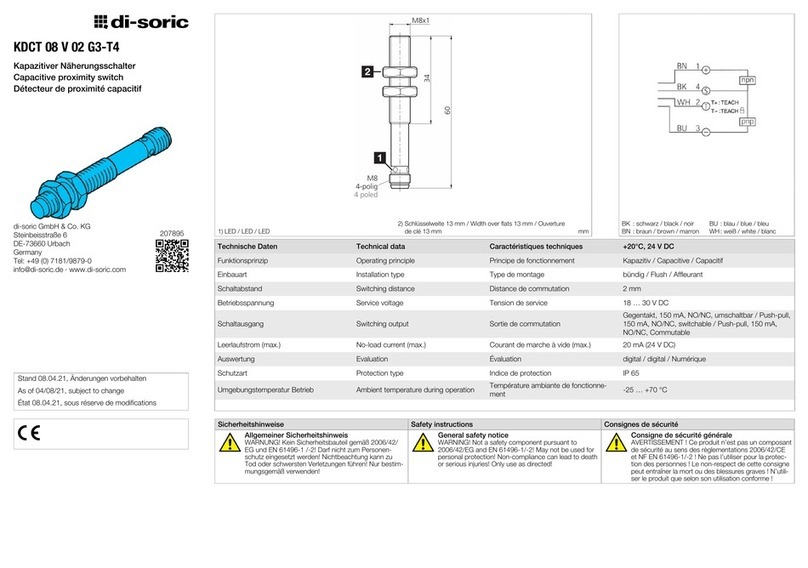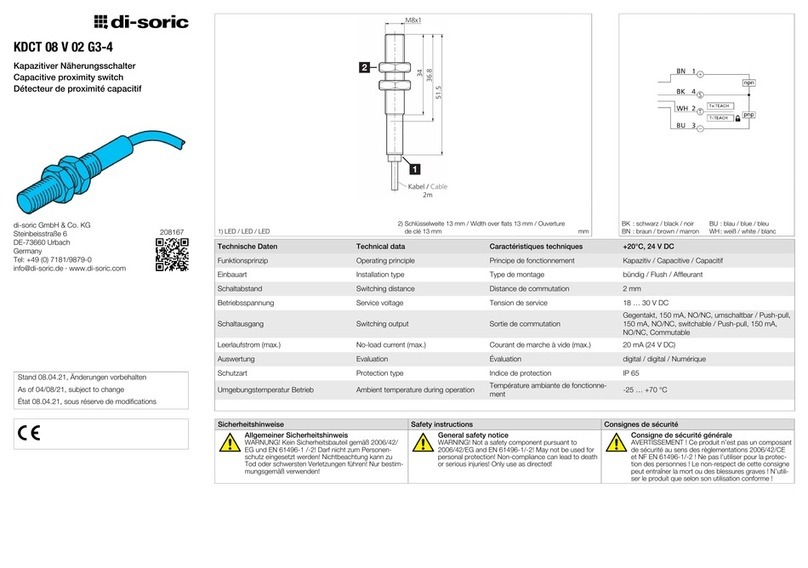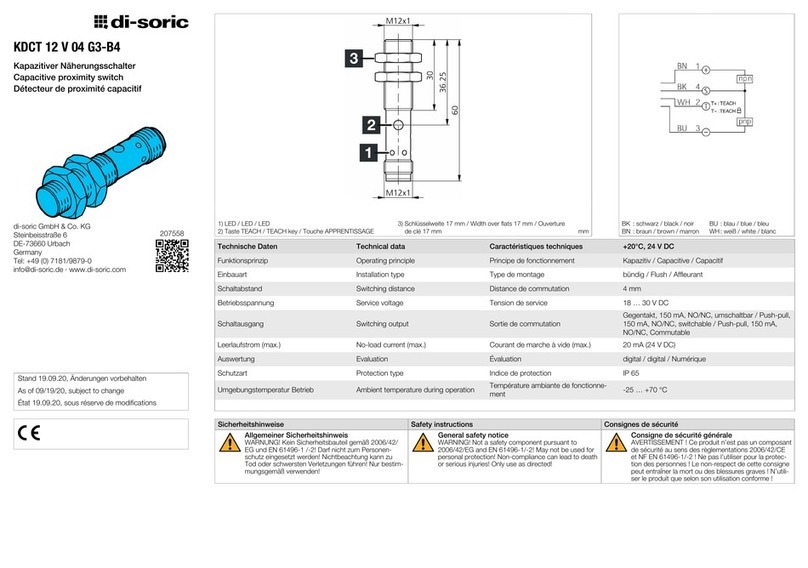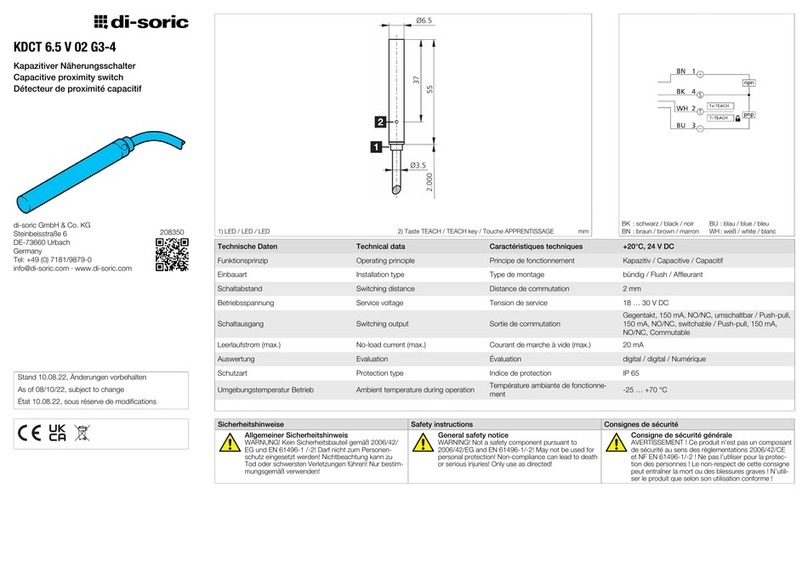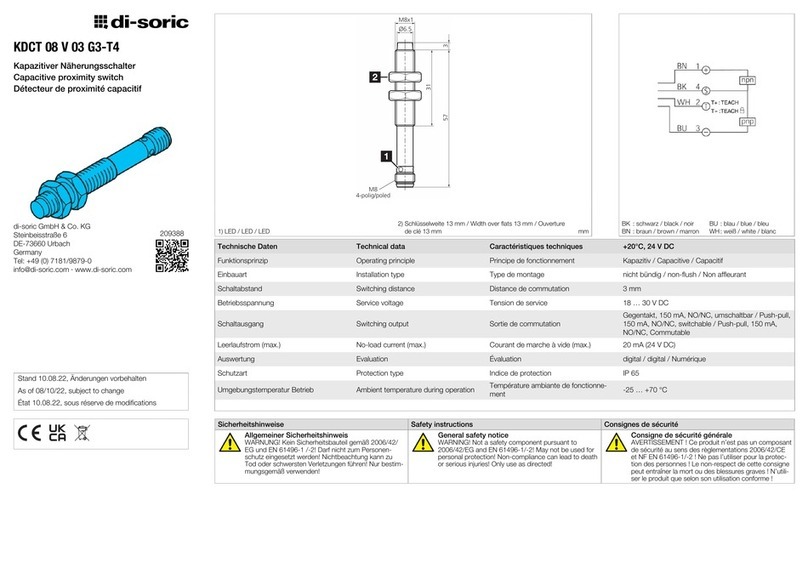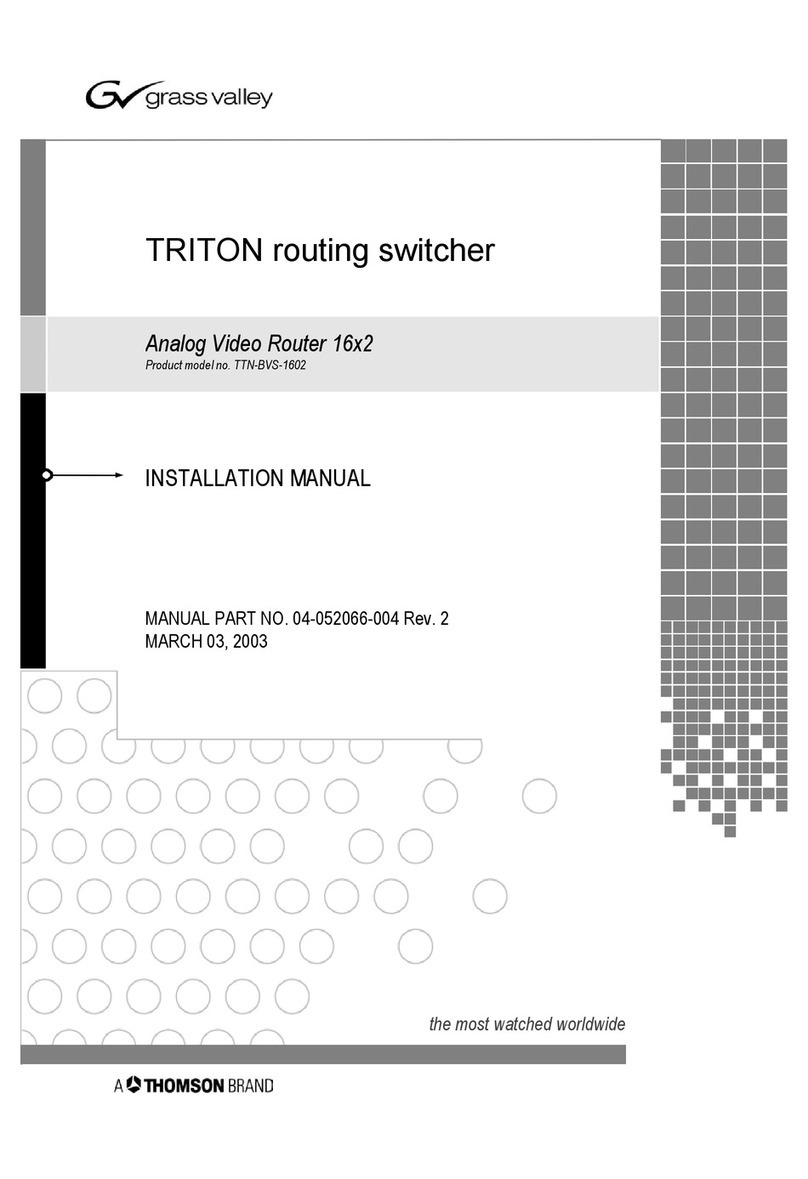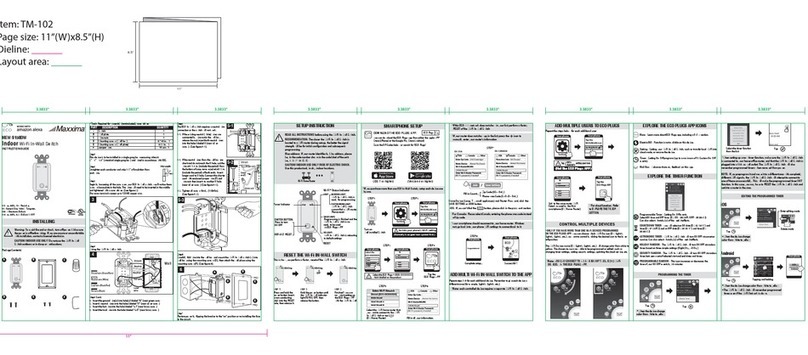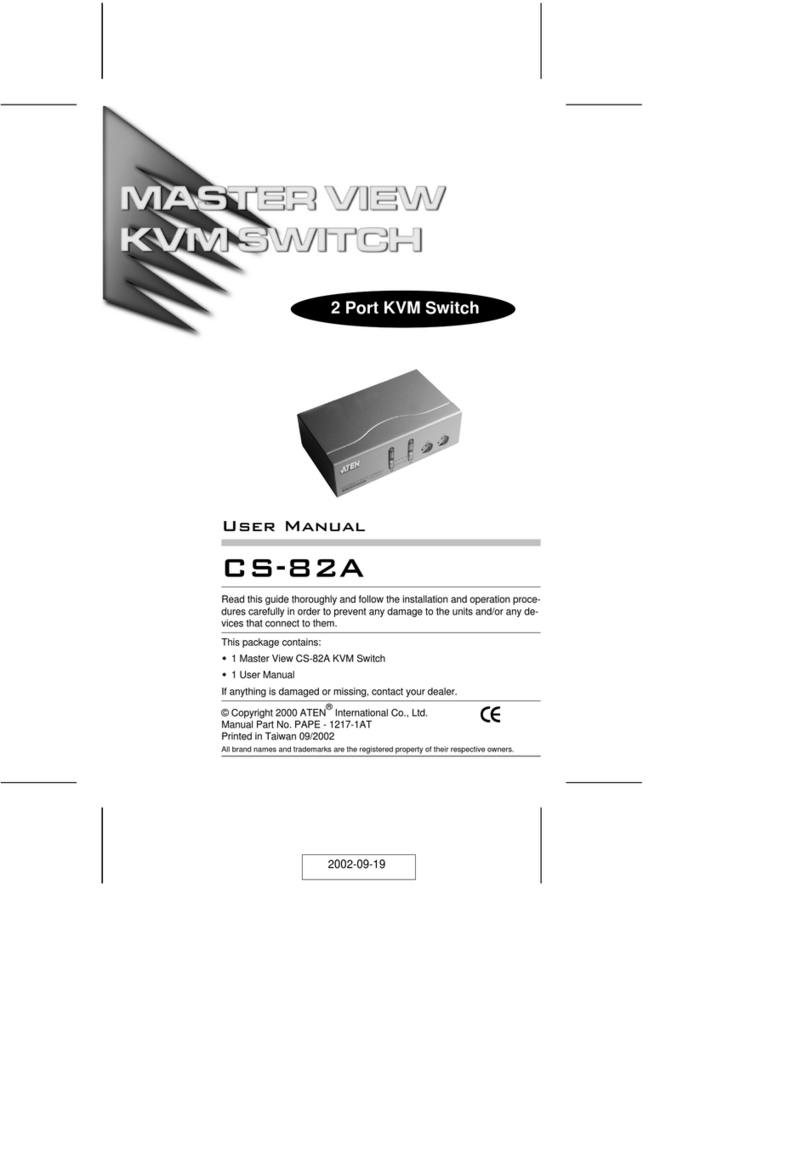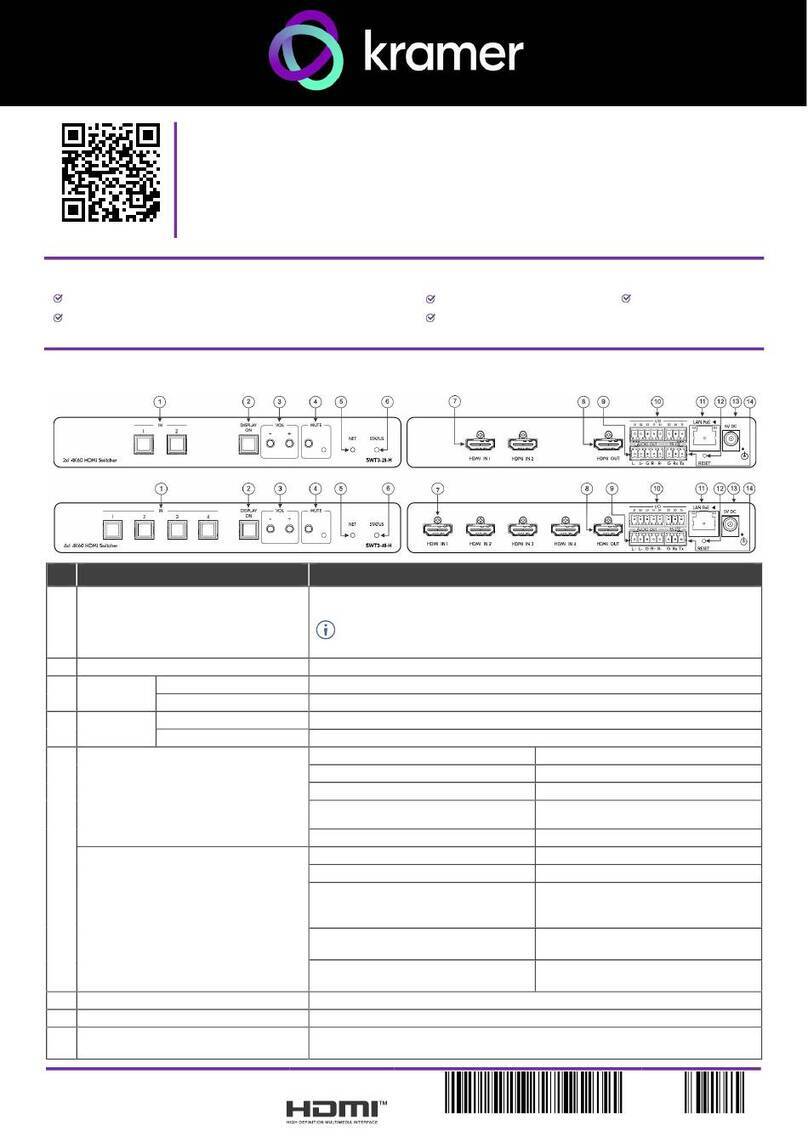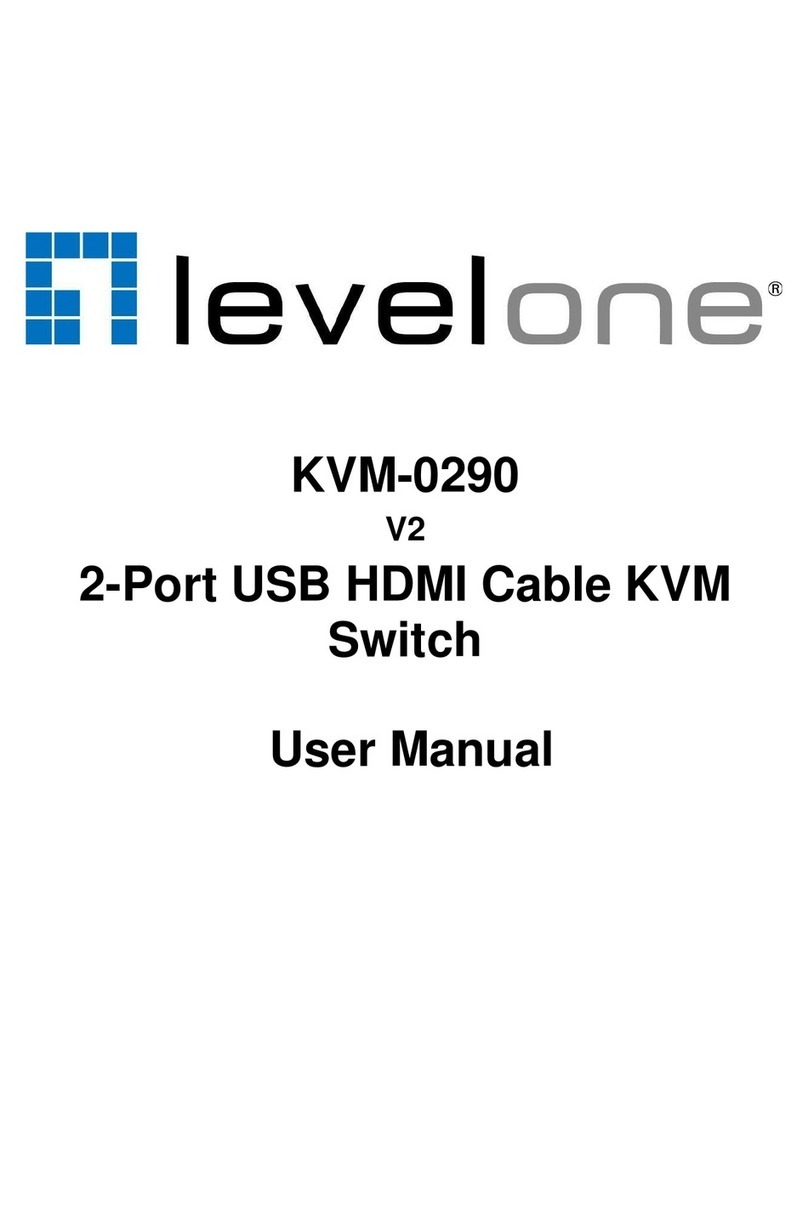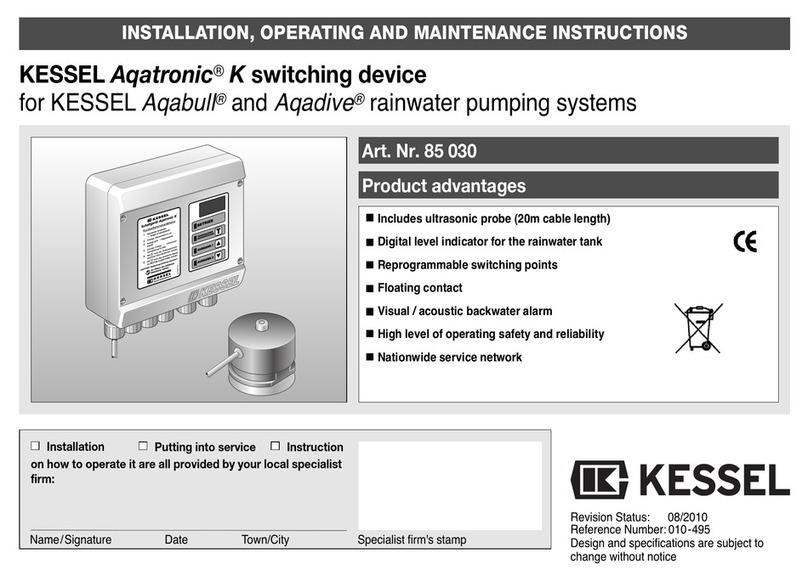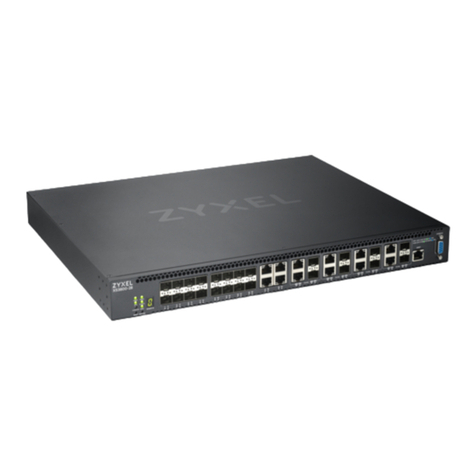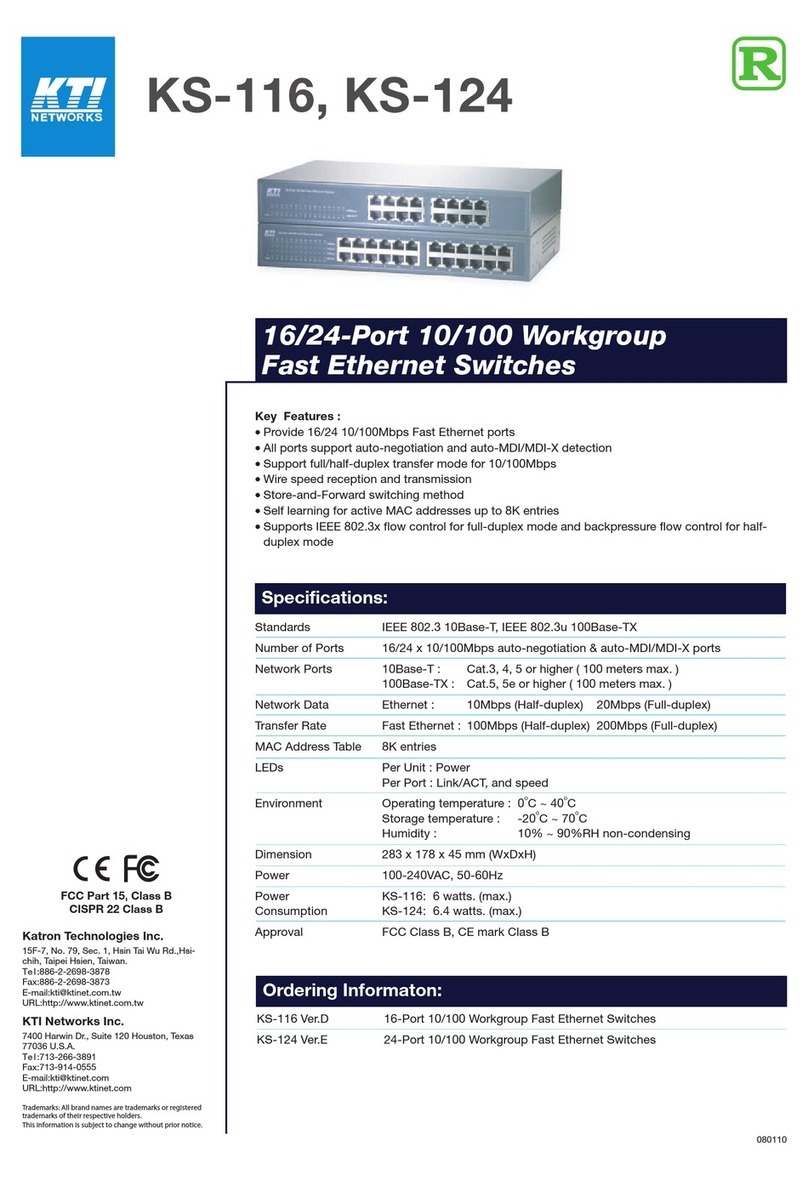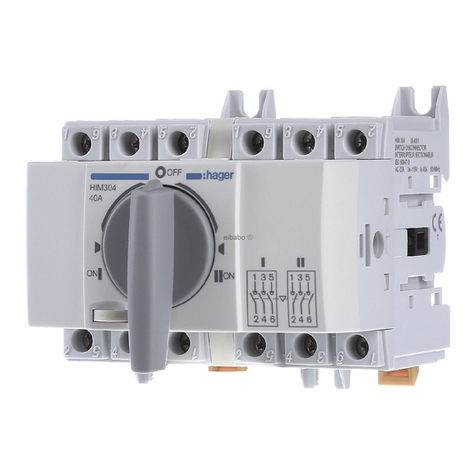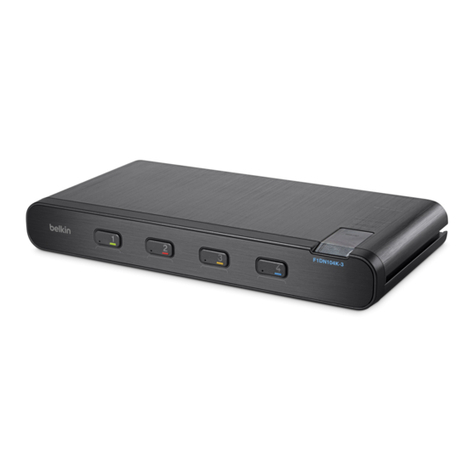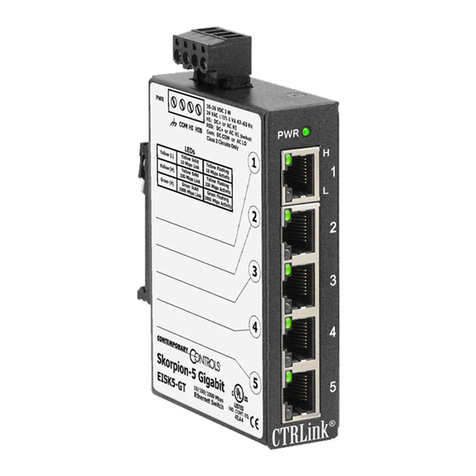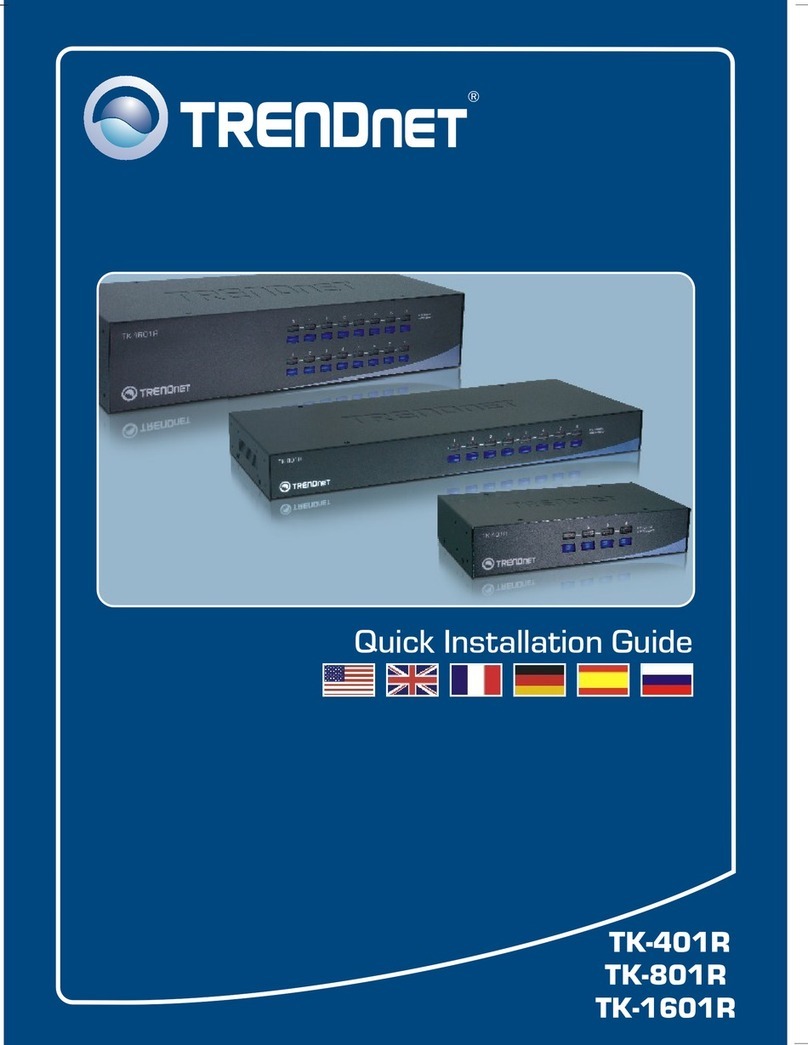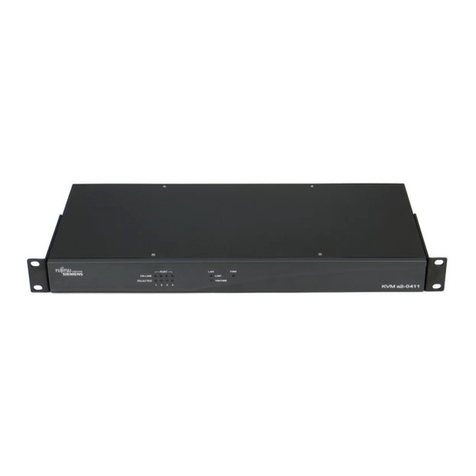Gegenüberliegende Sensoren Opposite sensors Détecteurs opposés
Bei sich gegenüberliegenden Sensoren muss der Abstand
zwischen den aktiven Fächen mindestens 4 d bzw. 4 x den
Nennschaltabstand (4 Sn), je nachdem welcher Wert größer
ist, betragen.
For sensors positioned opposite one another the distance
between the active zones must be at least 4 d or 4 x the
nominal sensing distance (4 Sn), whichever value is greater.
Dans le cas d‘un montage avec deux détecteurs capacitifs
opposés l‘un à l‘autre, la distance entre les deux zones acti-
ves doit être au minium de 4d ou 4 x la portée de détection
nominale (4 Sn), selon la valeur la plus élevée.
Justage Trimming Réglage
Der Schaltabstand kann mit einem Potentiometer in be-
stimmten Grenzen an die jeweilige Anwendung angepasst
werden.
Standardmäßig sind kapazitive Näherungsschalter auf den
Nennschaltabstand Sn eingestellt.
The operating distance can be set within specific limits with
a potentiometer. Therefore, the operating distance can
be adapted to each application. The capacitive proximity
switches are set as standard to the nominal operating
distance Sn.
La portée peut-être réglée par potentiomètre. Toutefois, elle
peut-être adaptée pour chaque application. Les détecteurs
de proximité capacitifs sont réglés à la portée nominale Sn.
Justage KDCR 16 … Adjustment KDCR 16 … Réglage KDCR 16 …
Das Potentiometer und die LED befinden sich unter einer
Klappe an der kurzen Stirnseite des Sensors.
Zur Justage ist die Klappe mit einem kleinen Schrauben-
dreher zu öffnen und das Potentiometer der Anwendung
entsprechend einzustellen.
The potentiometer and LED are located under the cover on
the front side of the sensor, opposite the connection cable.
Open the cover with a small screwdriver to adjust.
Le potentiomètre et la LED se situent sous le cache, à l‘avant
du détecteur, à l‘opposé du câble du raccordement. Ouvrir
le cache avec un petit tournevis pour effectuer les réglage.
Selbstkompensierende Sensoren Self-compensating sensors Détecteurs auto-réglables
Selbstkompensierende Sensoren sind ab Werk für Standard-
anwendungen mit flüssigen Medien vorjustiert.
Die Sensoren eignen sich ohne weitere Einstellung zur
Erfassung von flüssigen Medien durch Glas- oder Kunst-
stoffwandungen hindurch. Die Wandungen
(ca. 0,5 … 6 mm) werden automatisch ausgeblendet.
Schaum, Feuchtigkeits- und Schmutzanhaftungen an der
Behälterwandung werden weitestgehend kompensiert.
Self-compensating sensors are pre-adjusted by factory tech-
nicians for standard applications with aqueous media. The
sensors are fully tuned to detect aqueous media through
glass or plastic surfaces without further adjustment. Glass
or plastic container surfaces (approx. 0.5 to 6mm) are auto-
matically ignored. Foam, moisture and dirt adhering to the
inside and outside of the container surface are also taken
into consideration and compensated for.
Ces détecteurs sont pré-réglés en usine afin de répondre
aux applications les plus standards avec des médias aqueux.
Ils sont totalement opérationnels pour la détection de
médias à travers du verre ou du plastique sans réglages
additionnels.
Les récipients en verre ou en plastique (de 0,5 à 6 mm env.)
sont automatiquement ignorés. La mousse, l‘humidité et les
pollutions adhérentes aux surfaces des récipients sont aussi
prises en compte et compensées.



